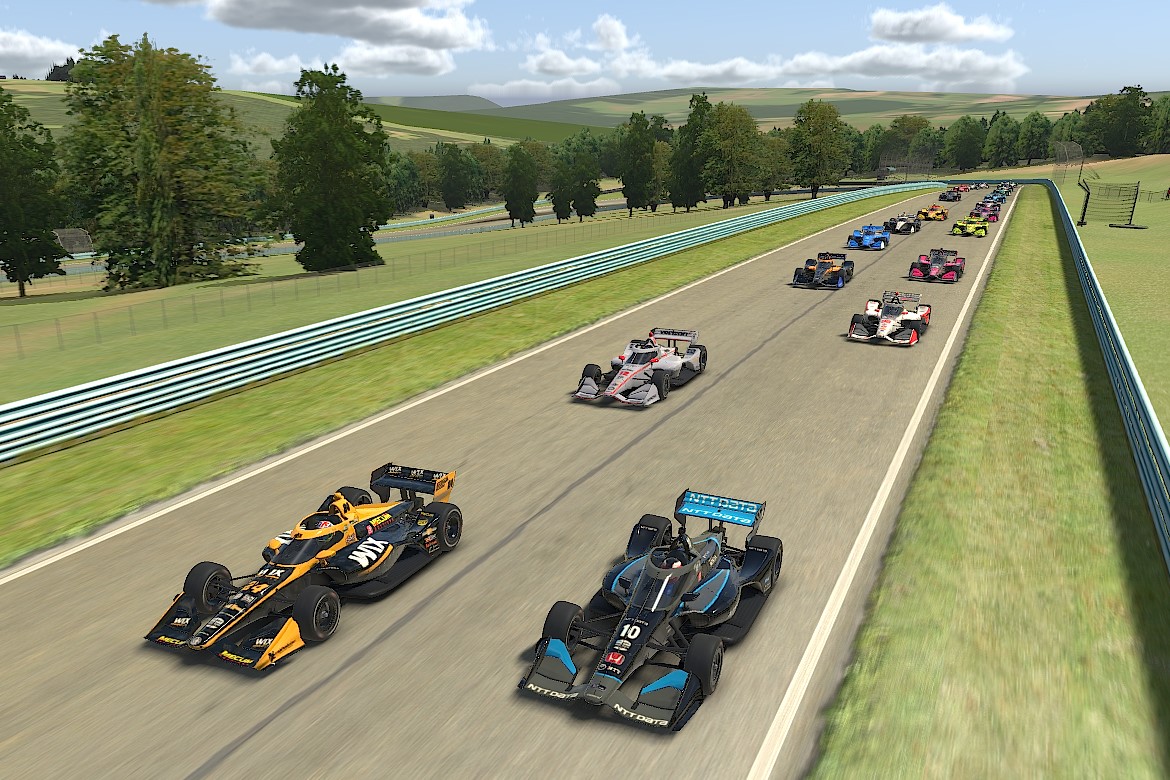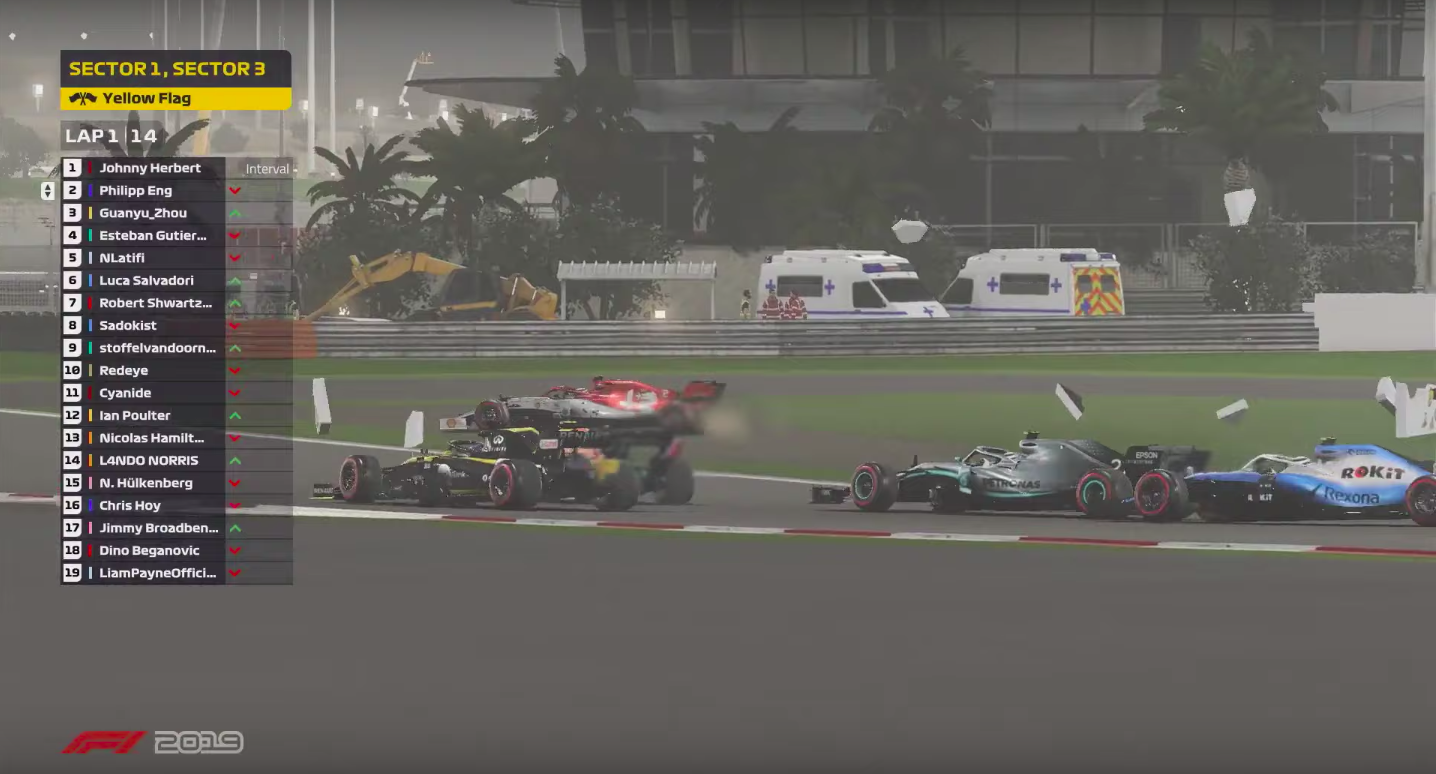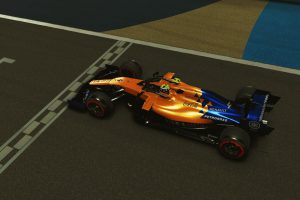Up Next

Formula 1 cannot be replaced. It has too much history, too big a profile, too many superstars. In fact, it’s so irreplaceable, that even when it is trying to replace itself, it isn’t trying to replace itself.
Confused? Sorry. Let’s try again. With the real world on hiatus thanks to a global health crisis, nearly every elite racing championship has attempted to fill the gap with an online-racing equivalent. The rise of esports may not be your thing, but it is unavoidable in current times.
F1 launched its new Virtual Grand Prix series two weeks ago. But whereas the likes of IndyCar and NASCAR used high-quality sim-racing platform iRacing to replicate their own events very faithfully, F1 deployed its own official video game, drafted in two real-world drivers and populated the rest of the grid with a mix of ex-F1 drivers, other professional drivers and VIP entries.
What followed was a race that was fun, not very serious, and perfect for the occasion. In short: F1 has deliberately replaced its real-world event with something that isn’t designed to be a direct replacement.
“When we decided to put on the Virtual Grand Prix, we were very clear that this is obviously a very difficult time for everybody and what we really want to do with sports, and in some ways esports in this sense, is to bring some light relief,” Julian Tan, F1’s head of digital business initiatives and esports, tells The Race.

“People look to sports and entertainment as kind of an escape, and we felt like there was an opportunity here to leverage the tools that we have at hand in our esports product to do exactly that.
“It’s more important that we put out something that is fun and entertaining. I think it helps to reduce the barriers to entry as well.
“This is for a bit of fun. We welcome all forms in terms of participation, we want to make it as easy for anyone to participate as possible.”
It’s worth noting that F1 has the luxury of being a big enough deal to have its own mainstream F1 game to use. IndyCar doesn’t have one, so relies in iRacing. NASCAR has a game, but it is not the same quality. It’s telling that it joined its fellow US series in turning to iRacing instead.
Plus, if F1 wanted to pursue the iRacing route, they would need 10 different F1 models to be properly represented, whereas IndyCar needs one car and NASCAR only three. That’s essentially a non-starter. All the more reason for F1 to pursue its own avenue.
After the inaugural Virtual GP, this writer argued that F1 had an opportunity to embrace its sillier side. It’s very promising to know that F1 has every intention of doing that.
Other online races offer something inherently more competitive, through a combination of the platform they use (iRacing and rFactor2, for example, over a video game) and the calibre of their entry (think The Race’s Legends Trophy, IndyCar/NASCAR’s real-world grids or Redline’s all-pro entry led by Max Verstappen and Norris).
F1 has a weakness in that it clearly cannot get all 20 drivers to play its video game and pretend it’s a real race. There’s no iRacing equivalent, there’s a very limited number of drivers already engaged in the sim-racing world, there are different contractual restrictions in place – fundamentally, F1’s just not operating under the same conditions as other elite racing categories.
So, unlike IndyCar and NASCAR, getting 90% or more of the current grid isn’t going to happen. And even if it did, the final product wouldn’t be as refined, because the F1 2019 game isn’t comparable to iRacing. They serve different purposes – not better or worse, just different.
In reality, F1 presents a cost like no other: it is wildly out of reach for the vast majority. In Esports form, it’s quite different. It is the easiest for a fan to emulate, but still in a way that does the championship justice and lets people engage to a high level
If F1 tried to do what other series are doing it would be taking a knife to a gun fight. So it played to its other strengths to identify a gap in an increasingly busy market.
“It’s important to have a competitive advantage, otherwise you risk saturation,” says Tan.
“We’re aware of how other competitions are evolving. And of course, there’s some really good things that they’re doing that we can of course learn from.
“But equally, I think it’s important that we know ourselves what it is that we want to achieve out of it, what our kind of core strengths are, and play towards those.”

The proliferation of online racing competitions in place of real-world events is no bad thing as long as they each offer something different, or can appeal to a wide range of audiences. And the Virtual GP’s position on racing’s esports spectrum is the polar opposite of where F1 sits in reality.
Across the online-racing spectrum there is a very wide range of ability, of game technology, and of investment in equipment to take part.
In reality, F1 presents a cost like no other: it is wildly out of reach for the vast majority. In esports form, it’s quite different. It is the easiest for a fan to emulate, but still in a way that does the championship justice and lets people engage to a high level.
“I would say that we all kind of exist along the scale,” says Tan. “Esports, by nature, are being played on a game, whether it’s iRacing or rFactor or the Formula 1 game.
“It’s already a lot more accessible into the world of motorsports without then not having it. The role of esports, in whatever shape or form it is, helps to break down these barriers and borders and helps to increase that accessibility for fans to engage in the world of motorsport.
“It is not the most accessible sport in the world out there. I always make the comparison of being able to pick up a basketball and go to a court, for example, but jumping into a race car is not a very accessible thing to do.
“The product that we have, our official Formula 1 game, is a nice blend. I think that in terms of balancing both authenticity and also kind of the mass participation aspect of it I think it’s a nice mix.”
Some will disagree over the value of this, or will miss the point entirely.
Critics see arcade-F1 as unbecoming of the real thing. But it’s too easy, bordering on lazy, to lambast F1 for not having an esports product as faithful to reality as IndyCar or NASCAR, for example.
What F1 will do is try to bring more and more real drivers into the mix, and draft in celebrity entrants as well. This is another element that wouldn’t be possible with a more advanced sim-racing set-up, because the barrier of entry is too high
F1 is not trying to do that, so there’s no direct comparison to be made. You can’t give an apple bad marks because it doesn’t taste like an orange.
The Virtual GP has its own unique broadcast and the composition of the grid stands out. While IndyCar and NASCAR have gone down the route of attempting to replicate the real world with online equivalents, F1 is pursuing a replacement in entertainment terms but not a like-for-like.
There is no point trying to pretend this is F1, because it isn’t. So why would F1 set itself up for a fall?
“The product is very different from real life F1,” Tan says. “So it’s very important that we’re aware of that, and the strategies that we employ have to reflect that.
“This is in no way a replacement of the real life F1 race because they are completely different products.”

The numbers alone from the inaugural race show the value in F1’s approach. It can do more to enhance the profile of the serious side of its esports offering, and that will begin on Sunday when the official team esports drivers will have a support race for the first time on Sunday.
It was odd to see them snubbed from the main Bahrain event two weeks ago, but on reflection it makes sense. They are not household names, and they will also probably wipe the floor with the real F1 drivers: those two factors are probably no good for drawing an audience or keeping it satisfied!
What F1 will do is try to bring more and more real drivers into the mix – it is understood to have wanted at least one from each team, so it still hasn’t quite managed to hit that target – and draft in celebrity entrants as well. This is another element that wouldn’t be possible with a more advanced sim-racing set-up, because the barrier of entry is too high.
“We have the flexibility to kind of change formats,” says Tan.
“If for example, if we were to have close to a full grid of F1 drivers, there’s still a lot of demand of seeing celebrities participate, there are different ways that you can integrate that.
“Obviously it’d be fantastic to have as many F1 drivers participate as possible because from a fan’s perspective, they would love to see their heroes, even if it’s on a video game.
“More generally, in terms of wider stars, sports stars, as well as bigger popstars, we’re keen to use this as an opportunity to cross-pollinate industries and get the sports and entertainment world working together.”
Only F1 can make that happen. And it has every intention of continuing its powerful combination: an immense online following, an unrivalled global appeal and profile, and access to many major names from its own bubble and the wider world.
Why would it limit itself to a half-baked replica that’s worse than what other championships can muster, when it has an opportunity to create something that stands out on its own?






